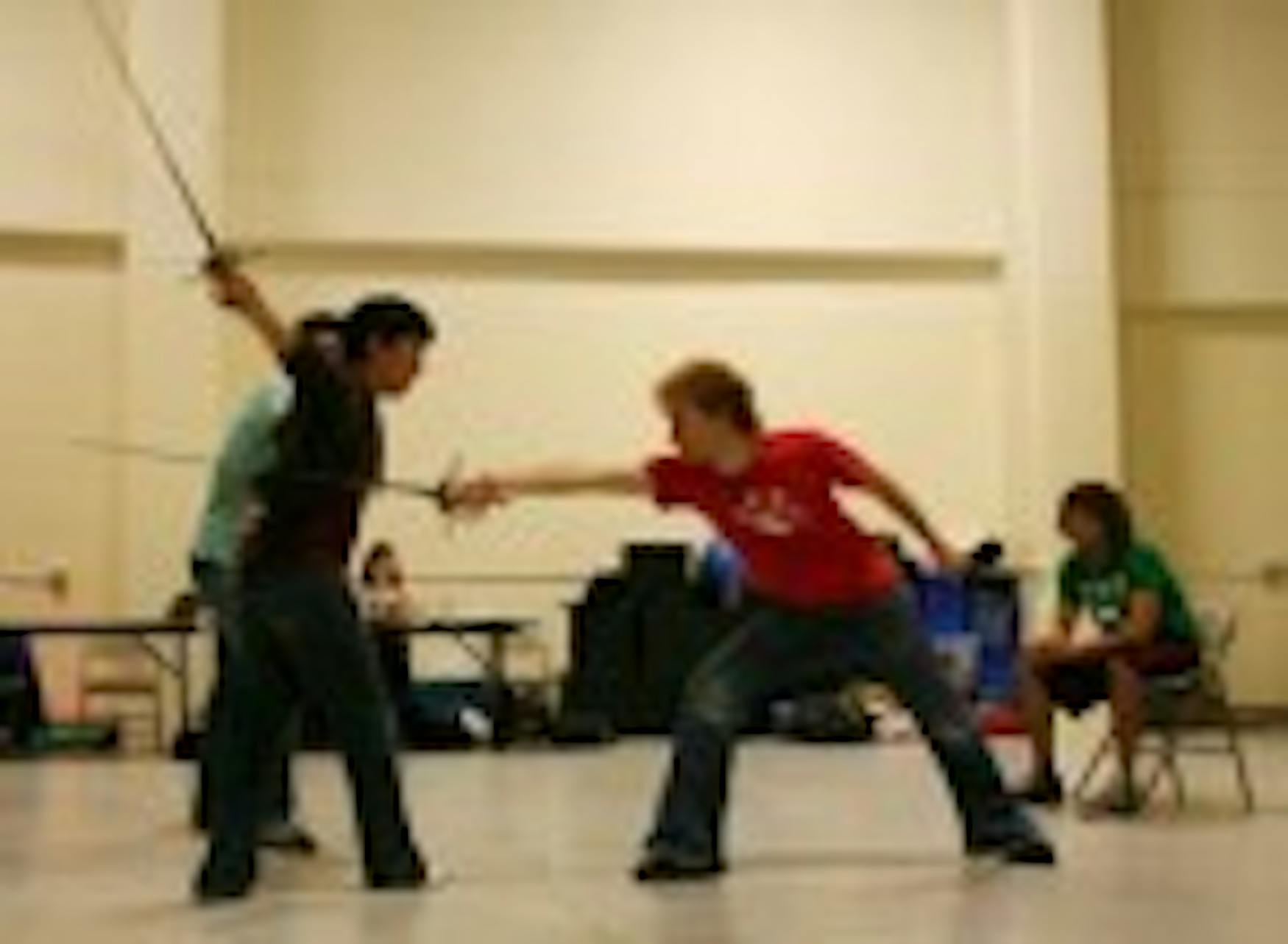BAREing It All: The finish line
After several months of difficult work, the cast and crew of 'Bare' triumphs before audiences
The third in a three-part series about the production of 'Bare.'Trudging across campus in the pouring rain is not the ideal way to spend a Saturday afternoon in early December, and when I finally enter the darkened Slosberg Recital Hall on Dec. 5 to see Bare hold its second and final performance, I do not know what to expect. Bare's journey to this performance has been a tumultuous one, mainly because some cast members left the show. However, in the weeks leading up to the show I saw the cast and crew bounce back from numerous setbacks with a resounding positive force.
It is immediately clear that word of mouth and carefully planned publicity have paved the way for a popular production, there is hardly an available seat in sight. The hall is buzzing with an immense energy that radiates from the audience members and that soon will be mirrored by enthralled cast members.
As the production begins, a mixture of keyboard, guitar, drums and other instruments replaces the silent audience. Onstage, the cast wears costumes that resemble Catholic school uniforms. The costumes contribute to the show's depiction of how the school affects its students' lives-they are safe and conservative and mask intense feelings found below the surface.
However, what is most noticeable and unique to this particular production is the stage setup itself. All 15 cast members remain on the stage floor throughout the show, but sit in chairs in a shadowed area towardsits back when not participating in a scene. This arrangement never distracts the audience from the show's unfolding action; the acting is so raw and genuine that it is nearly impossible to tear your eyes from the emotion-packed scenes.
The music, although collectively considered "pop opera," is varied and consistently representative of characters' emotions as they struggle against societal pressures throughout the show.
For example, I listen to a belittled and lonely Natalie, played by Abigail Clark '12, sing "A Quiet Night at Home" in a moment of utter defeat and self-deprecation. The song represents a piece of flawed womanhood to which many people can relate.
Later, Austin Auh '10 and Mark DiCampo, an actor brought in from off campus, playing Peter and Jason, passionately sing "Best Kept Secret" as they reveal their love for one another while simultaneously reflecting on the surrounding world's scorn for homosexuality.
Sister Chantelle, as played by Romy James '13, sings "91 Emergency," a song that receives what is perhaps the most roaring cheer of the entire production. Her soulful voice fantastically fits the song's gospel feel and clearly captures audience members.
After the show, James reveals about her role, "The first thing I did was to flip through the play to make sure [Sister Chantelle] was never like the other adults in [the show]. I really enjoyed playing an adult who was so different from the others. It was interesting to get into her state of mind and to see where she was coming from."
Although the production is imperfect in nature-at times, the music overpowers the cast's voices and the set design is scarce-these flaws allow the show's emphasis on identity and raw emotion shine to though. Amid its more comical moments, such as the cast throwing condoms into the audience, the show never loses its more serious roots, nor is the audience allowed to forget its greater meaning of the necessity for acceptance.
In the show's final moments, I notice many audience members have tears streaming down their faces. It is starkly clear that Bare has struck an emotional chord.
Following the show's finale, I immediately beeline for Kat Teeter '12, the show's stage manger. She is nearly jumping out of her skin with pure excitement as she exclaims, "Nadia, Abigail Clark, made me cry today for the first time. I'm just so very proud of my cast and my product, . and I'm beaming right now!"
The cast of Bare also provides a talk-back session, which is meant to provide time for questions, reflection and discussion of the production and its meanings. The cast and crew sit in the front of a small classroom around the corner from the recital hall, while approximately 30 audience members, faculty, parents and students alike, surround them. Auh begins by exclaiming to the cheering throng of supporters, "I'm extremely proud of everyone, especially of what we went through and where we are now. . I never imagined it would be like this, this big."
Auh delves into his personal ties to the play, describing his upbringing in Wisconsin, relaying that he was a fairly devout Catholic who attended a very strict church. Around middle school, he came to terms with his sexuality but still had to cope with the church. Of his relationship with his religion, he states, "I was one of those Catholics who left the church because it wasn't helping. I didn't want to worship somewhere that didn't accept me for who I was."
Clark speaks next and describes her hometown of Townsend, Mass. as the only district in that state that consistently has politically conservative leanings. She notes that her church was "awfully homophobic" and that many of her friends "have lost faith in God due to this."
Such stories proved to be a backbone of inspiration to the cast and crew of Bare, who raised $409.15 and collected gifts, donating them to Waltham House, a safe haven for teenagers who have been shunned and rendered homeless due to their sexual orientation.
I leave the room knowing I just witnessed a unique and inspiring facet of Brandeis' theater department. Auh states it perfectly in the director's notes of the playbill: "Bare is about identity. Bare is about people trying to reconcile who they think they are with who they think they should be. This show is about something so intrinsically universal to all humans no matter your beliefs, sexuality, or heritage.




Please note All comments are eligible for publication in The Justice.